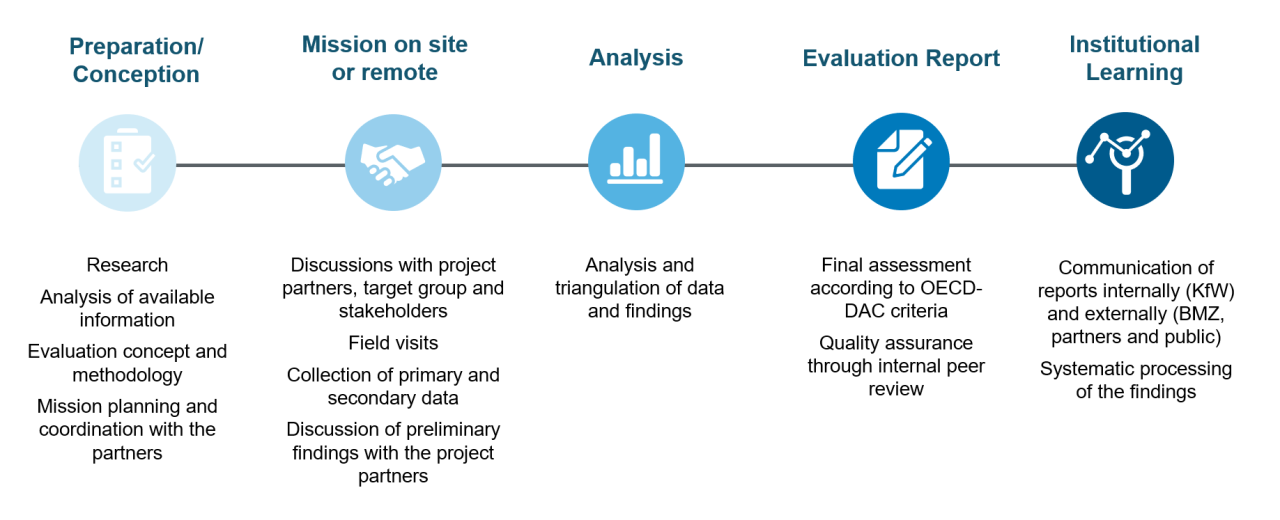Tip: Activate javascript to be able to use all functions of our website
The ex-post evaluation takes place approximately three to five years after the completion of the projects. The evaluation assesses the entire project cycle, from planning and implementation to operational experience, in terms of the impacts achieved and their sustainability. Ideally, the question is answered as to which net effects can be attributed causally to a FC project. The ex-post evaluations use the Rapid Appraisal methodology, which combines qualitative and quantitative approaches and triangulates findings. To this end, the use of data is essential, and insights are methodically hardened by using modern technology, analysis tools and software. The OECD-DAC evaluation criteria provide the framework for the evaluation of projects. These are considered per criterion and finally assessed using a grade scale of 1 to 6.

In attributing overarching developmental effects (impacts), the ex-post evaluation follows the approach of a contribution analysis based on plausibility considerations and a careful analysis of documents, data, facts and impressions. The evaluators use the available files and reports to examine the project, its content and background. They conduct interviews on site or remotely, analyze data and statistics, evaluate information from other donors and stakeholders and look for scientific evidence to prove the results chain.
Causes of any contradictory information are investigated, attempts are made to eliminate these contradictions and the evaluation is based on statements that are confirmed by several sources of information, if possible (triangulation). The analysis of the impacts is based on assumed impact relationships that are already developed during the appraisal and, if necessary, updated and documented in an impact matrix during the ex-post evaluation. The impact logic/impact chain (theory of change) is also presented in the report in a way that is comprehensible to outsiders and existing risks and assumptions are pointed out. The evaluation report sets out the influencing factors identified for the impacts and why the project under review presumably made which contribution. The results are weighed up against comparable projects. Where possible, the impact logic is underpinned with indicators at the level of outcomes and impacts.
The diagram illustrates the sources of information that are selected by the evaluator on a case-by-case basis.
